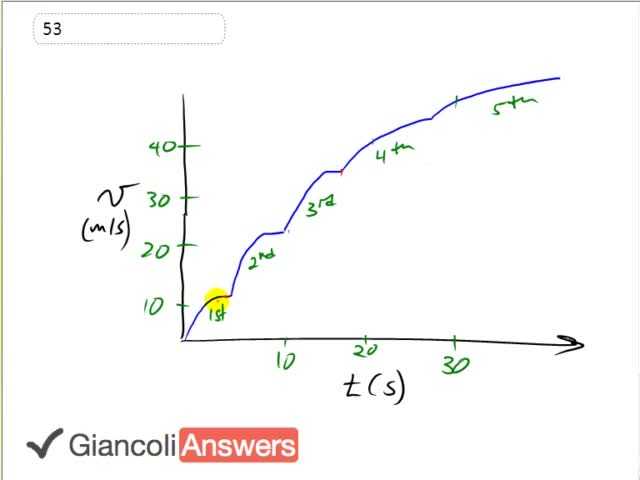
b)
c)
d)

In order to watch this solution you need to have a subscription.
To find acceleration we need to know what the change in velocity is and how long it takes to change the velocity that much, so it’s change in velocity over time. If we say that first gear ends at this time just before the flat plateau when the clutch is depressed and it’s not in any gear during that flat portion that looks like it’s about three seconds along and it appears to be about thirteen meters per second high in which case for part a we would answer: acceleration is thirteen meters per second minus zero meters per second divided by three seconds minus zero seconds and that’s four point three meters per second squared. And then for the third gear it’s the same process, we are going to say it starts from about at the eight second mark and then it ends at about the fourteen second mark and its velocity changes from an initial velocity of twenty four meters per second up to thirty eight or so so the calculation here then is: final velocity thirty eight meters per second minus initial velocity of twenty four meters per second divided by a final time of fourteen seconds minus initial time of eight seconds giving two point three meters per second squared. Part c says: acceleration during the fifth gear. As we go along the slope gets less and less steep, so this is quite steep there whereas it’s not steep during fifth gear that’s and so we expect a smaller answer here. This initial time seems to be about twenty eight seconds and it goes up until fifty seconds starting at a velocity of forty four meters per second up to a maximum of fifty three or so. So for part c we’ll say: acceleration is fifty three meters per second minus forty four meters per second divided by fifty seconds minus twenty eight seconds giving us zero point four one meters per second squared. For part d, the first through the fourth gear, acceleration is going to be the total change in the velocity and we have the final velocity after fourth gear is done that’s about forty four meters per second and it takes about twenty eight seconds to get from the beginning to the end of the fourth gear. So we’ll say: the change of velocity is forty four divided by twenty eight seconds and this gives us one point six meters per second squared average acceleration during the first four gears.